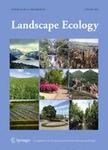版权所有:内蒙古大学图书馆 技术提供:维普资讯• 智图
内蒙古自治区呼和浩特市赛罕区大学西街235号 邮编: 010021

作者机构:UNESP IBB Dept Bioestat BR-18618000 Botucatu SP Brazil Univ Sao Paulo ESALQ Dept Entomol & Acarol BR-13418900 Piracicaba SP Brazil
出 版 物:《LANDSCAPE ECOLOGY》 (园林生态学)
年 卷 期:2014年第29卷第9期
页 面:1531-1540页
核心收录:
学科分类:08[工学] 0708[理学-地球物理学] 09[农学] 0705[理学-地理学] 0902[农学-园艺学] 0713[理学-生态学] 0834[工学-风景园林学(可授工学、农学学位)]
基 金:CAPES FUNDUNESP [2275/002/14-PROPe/CDC] CNPq [483567/2012-4] Sao Paulo Research Foundation (FAPESP) [2013/24140-6, 2012/00254-0] Formas [2012-00254] Funding Source: Formas Fundacao de Amparo a Pesquisa do Estado de Sao Paulo (FAPESP) [12/00254-0] Funding Source: FAPESP
主 题:Cellular automata Clustering algorithm Nutritional ecology Agricultural landscapes
摘 要:We report on the use of a spatially explicit model and clustering analysis in order to investigate habitat manipulation as a strategy to regulate natural population densities of the insect-pest Diabrotica speciosa. Habitat manipulation involved four major agricultural plants used as hosts by this herbivore to compose intercropping landscapes. Available biological parameters for D. speciosa on bean, soybean, potato and corn obtained under laboratory conditions were used to group the homogeneous landscapes, composed by each host plant, by a similarity measure of host suitability either for larval survival and development, and adult survival and fecundity. The results pointed corn as the most dissimilar culture. Therefore, intercropping corn with any other crop system tested could reduce insect spread through landscape. This was proved using a cellular automata model which simulate the physiological and behavioural traits of this insect, and also different spatial configurations of the intercropping. Spatio-temporal patterns obtained by simulations demonstrated that the availability of corn bordering the field edge, which are areas more likely to invasion, is key for insect population control.